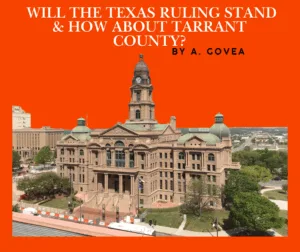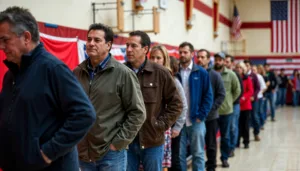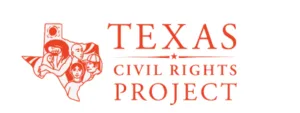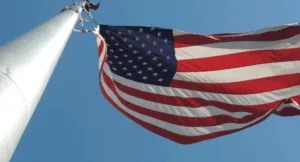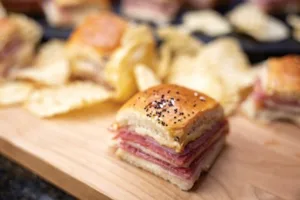The sun had set over the horizon and as darkness draped the Hemingway Marina an inconvenient truth became abundantly clear; we had lost Roberto. It was strange to describe a 56-year-old man as lost.
COPYRIGHT ARRAZOLO LAW, P.C.
However, we were in a foreign country and there was really no other way to describe it. We had all left together this morning to Old Havana. We had agreed to meet at 5 at La Floridita. However, I got delayed because my friends, Jill and Dan insisted I help them find shirts like the one I had bought.
 It’s not easy buying souvenirs in Havana. Any manufactured good is scarce. Souvenir shops don’t have deep inventories like they do in other countries. For example, I had purchased several small oil paintings. However, after purchase the vendor would remove the wooden frames from the canvas. They had to reuse the wooden frames because they did not have any more. By the time we reached La Floridita at 7pm Roberto was nowhere to be found. We took a cab to the Marina Hemingway, and he was not there. It dawned on me that I had assumed he had cab fare. Roberto was a very proud person, and he would not have asked to borrow money. I felt terrible.
It’s not easy buying souvenirs in Havana. Any manufactured good is scarce. Souvenir shops don’t have deep inventories like they do in other countries. For example, I had purchased several small oil paintings. However, after purchase the vendor would remove the wooden frames from the canvas. They had to reuse the wooden frames because they did not have any more. By the time we reached La Floridita at 7pm Roberto was nowhere to be found. We took a cab to the Marina Hemingway, and he was not there. It dawned on me that I had assumed he had cab fare. Roberto was a very proud person, and he would not have asked to borrow money. I felt terrible.
The one suggestion we heard over and over was to stay out of Havana at night. Now we were walking single file to catch a cab back to the city to look for our mate. I left word with Dan and Jill that we were leaving and to report us to the US and Mexican embassy if we did not return by morning . I should have taken some long-distance walkie talkies. We got dropped off at La Floridita and walked down Obispo Street towards Plaza de Armas. Don asked a local if there was free internet anywhere and he gave us directions. Many of the streets were dimly lit. We walked about 10 blocks and came upon an extraordinary sight.
People were sitting on the curbs and the street in the darkness, huddled against one another. People of all ages, shapes, and sizes. They all either had their own device they were looking into or sharing. You could not walk without stepping on someone. It was a tranquil and serene settling. A nation thirsty for knowledge from the outside world. We walked around, looking for Roberto with no luck. We thought that maybe he had come here to make contact.
We headed to Avenida Antonio Maceo and followed the Malecon to Hotel Nacional de Cuba. We passed several streets that were bustling with activities. The bars had spilled into the streets in some places and people were dancing to salsa and merenge. I wondered if the patrons were Cuban. At La Floridita, it seemed as it most of the patrons were foreign tourists and the only Cubans were the staff and entertainment. Roberto loved music so we looked in several bars but no luck. We got a cab and asked the cabbie to take a route the pedestrians might be more likely to take. It was past midnight when we got to the marina.
“Any luck with Roberto?” asked Dan as we walked by his boat.
“No,” I said.
“You going to the embassy tonight?”
“No, we are going to stand watch for him and go in the morning,” I answered. We were all tired. We sat at the back of the boat and waited. At about 2:30 am we saw a figure making its way through the shadows towards the boat.
“Roberto!” yelled Don. We all walked towards him. He was barefoot and carrying his shoes.
“Me vine caminando desde Havana!” yelled Roberto. His eyes were bloodshot. He looked drained and dehydrated. I was so happy to see him.
“Roberto!,” Dan yelled as he swayed his way to the boat. Dan was a party animal and was three sheets to the wind. He also gave Roberto a big hug. Everybody liked Roberto.
We spent the next three days enjoying Cuba. We went to Hemingway’s Hacienda. We also participated in a Regatta into Havana Harbor. All 19 yachts in our group were part of the parade. First each boat stopped at the customs office, then went out of the marina and single file towards the Havana Harbor. We were told that it was the first time since the revolution that American private yachts were allowed into the Havana Harbor. I didn’t know if that was true or if that was something they told us as tourists.
During the Regatta, we had passed a tiny fishing boat with three Cuban fisherman. One of the fishermen was a young man. His face was covered in soot from their small engine. He didn’t seem very impressed by our festive mood, big yachts, and loud music. He looked at me and made a rotating motion with his fingers pointing at me then at himself. Asking if we could trade places. I would have liked to sit with him and learn more about his perspective. It made me think of two young men I had photographed while I was eating at a small restaurant. They were carrying an antique sewing machine and had a very determined look on their faces. It was these types of Cubanos I wish I had spent more time with learning about their way of life and their hopes for the future.
Havana was beautiful and it was an extraordinary trip. The history is in living color. When Castro rolled into Havana on January 8, 1959, he created a time capsule between old, Capitalist Cuba and the new Communist government. Many buildings that housed banks, oil companies and other enterprises were long abandoned. Their beautiful exterior architecture is still visible. The influx of American cars also stopped and created the incredible spectacle of antique cars with Japanese transmissions and Russian engines that zoomed around in Havana. I did not see a single accident while I was there. Don’t know if it was because of minimal cell phone use, lack of tight work schedules or what. I left thirsting for more and hoping to come back some day. I felt a sigh of relief when we cleared Cuban customs and made our way towards Key West. It’s funny how on a typical vacation, you hop on a plane and 2 hours later you are at your doorstep. In our situation leaving Havana meant another 960 miles back to home port. A storm was brewing to the North. Vacation was over and the mighty sea demanded our full attention.
Author BIOGRAPHY, Gilbert Arrazolo
I was born on April 24, 1968 in Rio Bravo, Tamaulipas Mexico. My family brought me to the United States when I was four years old. When I was 11 my father was deported back to Mexico and was gone for six years. Fortunately, my father had instilled in me a strong work ethic and I obtained my law degree at 24 years of age.
I have handled crashworthiness claims against SUV/light truck manufacturers since 1996 due to my belief that manufacturers did not provide adequate occupant protection in the event of a rollover accident. The federal government finally changed the federal safety standard in 2012 and as a result cars built today do tend to provide more protection in the event of a rollover.
However, the most interesting case I’ve handled was a case in 1995 where I had the pleasure of meeting Alberto Govea. It was a race discrimination case against Conoco in which ultimately the United States Supreme Court swept minority interests under the carpet. I hope to publish my book about this extraordinary case, LEGAL RACISM IN AMERICA. I’d like to congratulate Alberto Govea on this fine magazine. I am truly humbled by the opportunity to be published here. I’d just like to say that I’ve admired your willingness to fight for justice and your efforts are truly appreciated.

